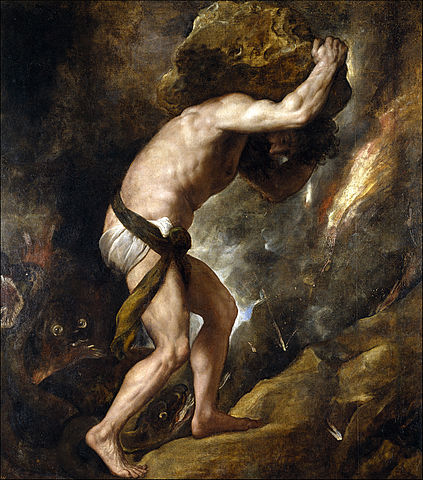Sisyphus the Activator

Activation Points Once Per Year
A SOTA activator can get points for activating a given summit once each calendar year. For example, if you ride the tram to the top of Stone Mountain and you make 4+ QSOs from the summit in 2015, you collect two points. If you activate Stone Mountain again in 2015, you get zero additional points. When 2016 arrives, you become eligible for 2 more points.
A Peculiar Activator
So why does one ham activate San Bruno Mountain and Mt. Davidson again and again? As of mid-2015, he’s activated San Bruno Mountain alone more than a dozen times this year!
-
Maybe he lives there? Unlikely. It’s a typical radio/TV tower summit.
-
Maybe he really likes San Bruno Mountain? Possibly, but he does something unusual from that summit… he makes summit-to-summit contacts.
K6EL is the leading summit-to-summit activator in the United States, with more than twice as many “S2S” contacts as his nearest competitor. (The superlative metric about K6EL is that he has the lowest points per climb of any activator in the world!)
A key appeal of these summits is that they are convenient to his home and they have strong cell signal. Cell signal is important, because it allows him to use SOTAwatch to identify other activations in progress. With this information, he’s able to call the other activator and make the contact.
Your Advantages
There are a number of hills near Atlanta with similar advantages, including Stone Mountain, Kennesaw Mountain, and Pine Mountain. For Stone Mountain, you could carry a folding chair and your cooler!
Unless you’ve got a truly outstanding antenna at home, you’ll find that you get better signal reports operating QRP from the top of a summit than QRO at home. You’ll certainly get more pile-ups from a SOTA summit than your Atlanta-area shack. (Activators can get points for the same summit once per UTC day, so they’ll call you each time.) QRM is low from most summits. (Get away from the building on top of Stone Mountain, to minimize QRM there.) If you’re a VHF operator, line of sight is great on a summit.
QRP-to-QRP
Summit-to-summit contacts are often regarded as particularly challenging. You’ll have two QRP rigs and two portable antennas on the QSO, and you’ll be competing against QRO chasers with beams. A little patience is all that’s needed! A SOTA pile-up typically lasts only 5 minutes or so. Once the fuss has died down, you’ll be heard. When you send your call sign, be sure to state, “Summit-to-summit.” Other stations typically yield when they hear this. (And you’ll compete surprisingly well, given your elevation.)